September 28–29, 2025
The last two days of September greeted me in Grand Teton National Park with a crisp autumn chill and skies that promised clear, golden light. I left my dispersed campsite in the early dawn and followed the quiet road toward Signal Mountain Lodge. When I reached the turnout at Oxbow Bend, I saw around fifty people already gathered, all standing silently with cameras and tripods aimed toward the water. Their calm expectancy immediately told me something special was about to happen. I stopped too and learned that they were waiting for the sunrise to ignite the mountains. Of course, I joined them.
The Snake River at Oxbow Bend lay motionless, a perfect mirror for the dark silhouettes of the peaks beyond. Even before the sun touched them, the trees around the water were glowing in their autumn colors — deep golds, russet reds, and soft ochres that shimmered faintly in the dim light.
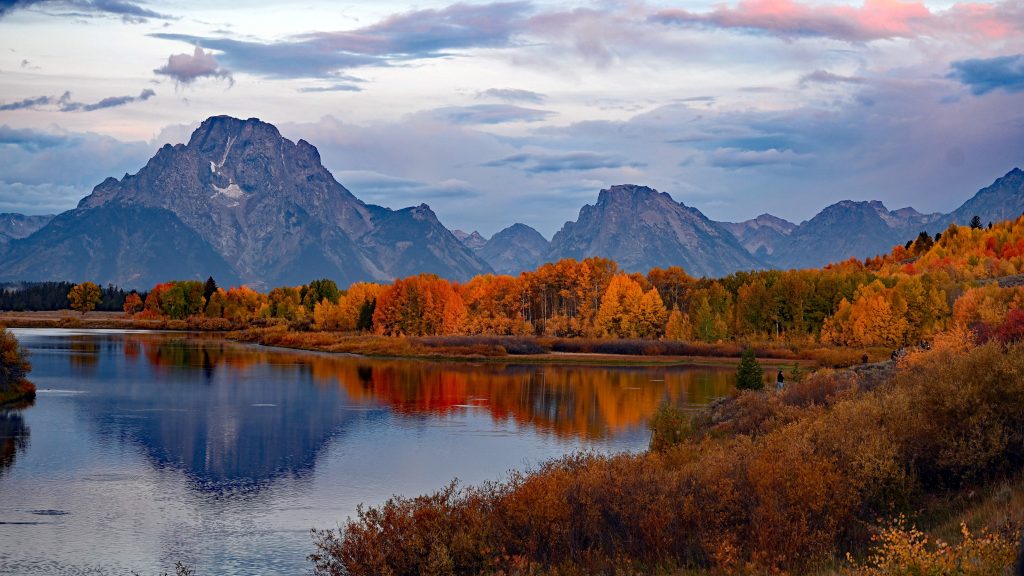
I took a few photos before the first light arrived, wanting to capture that quiet moment of anticipation — the subdued tones, the mist hanging above the water, the scent of cold pine and earth.
Then the sun rose. The first beam struck Mt. St. John and the Rockchuck Peak, a jagged, powerful summit that seemed to rise straight from the valley

floor. The light traveled fast, spilling over Mount Woodring on the right and then illuminating the broad face of Mount Moran,
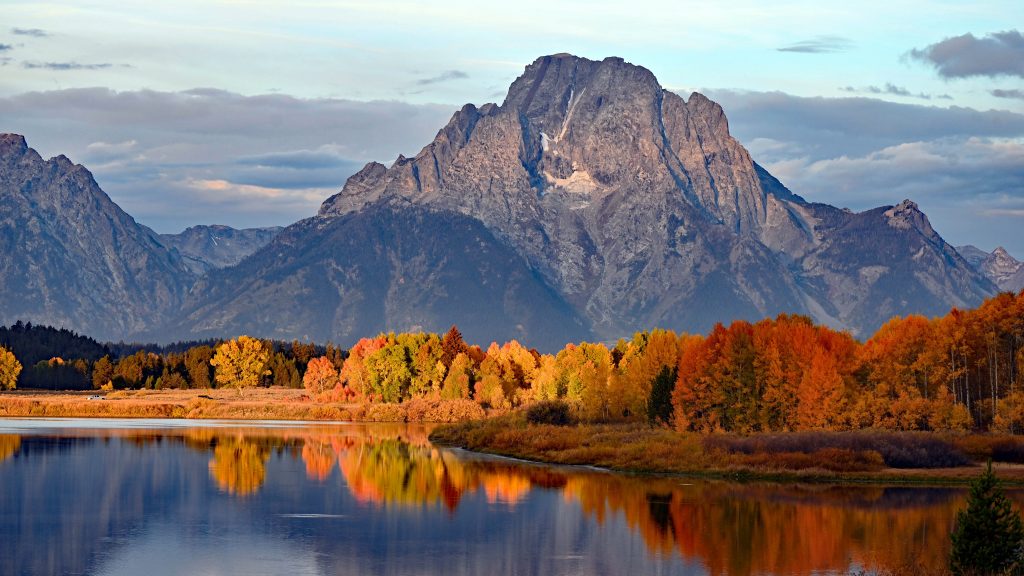
its massive bulk reflecting an almost metallic pink that slowly turned to gold. Behind them, Bivouac Peak and Traverse Peak
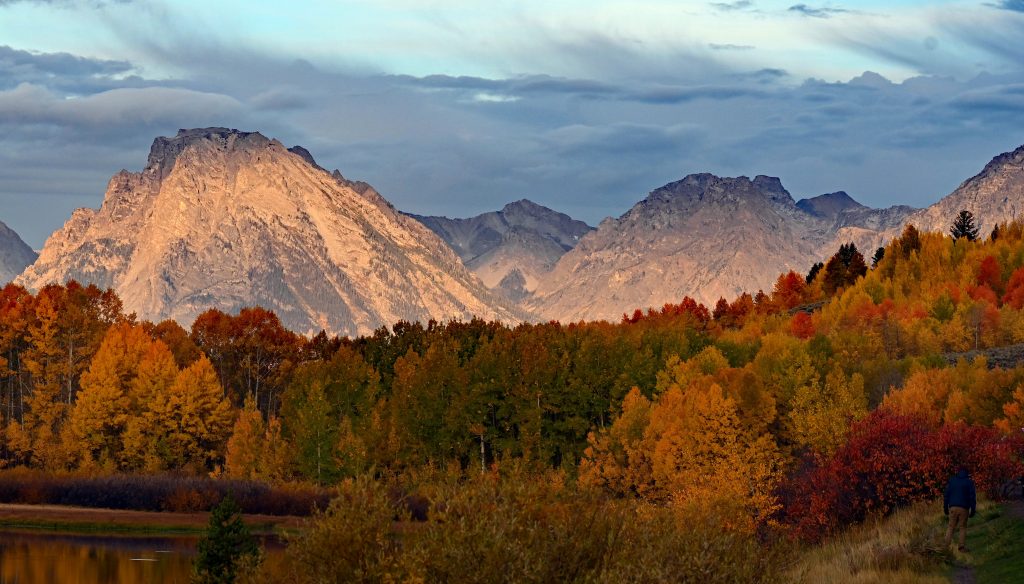
emerged from the shadows, though at first sight they appeared as one great wall of rock. To the right, Eagles Rest Peak caught the light last — a calm, graceful giant that framed the glowing chain like a sentinel.
The transformation was breathtaking. What had been cold blue stone only minutes before now radiated warmth and color, the whole mountain range mirrored in the still water below.

I kept photographing, though I often paused just to watch in silence. It felt as if the mountains themselves were waking up, stretching their long shadows over the valley.
After the crowd began to disperse, I continued to Signal Mountain Lodge and treated myself to breakfast with a view of the shimmering lake.
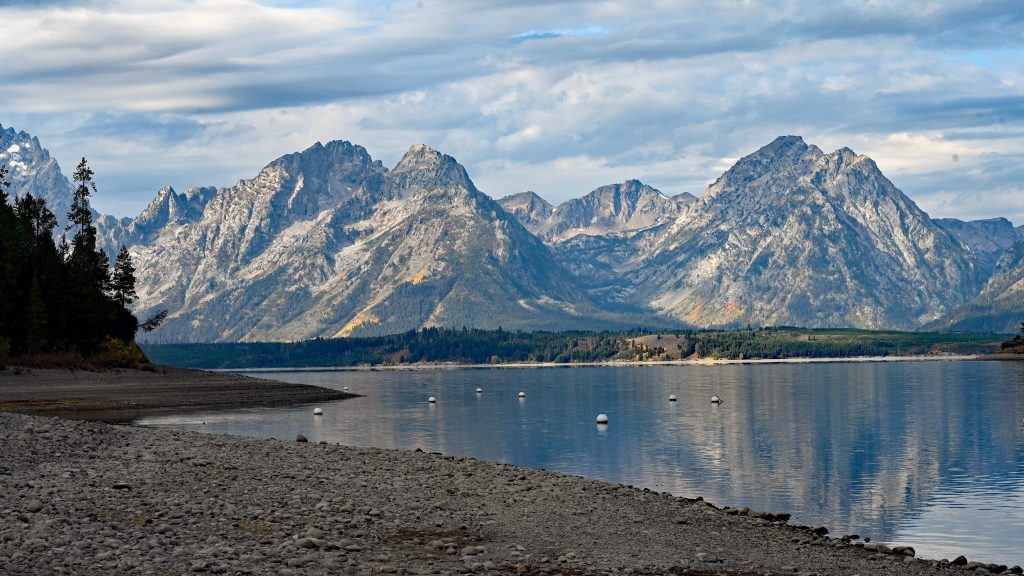
From there, I drove to String Lake and began a gentle hike along its shore. The water was so clear that I could see every stone beneath the surface, the reflections of the mountains rippling softly whenever a breeze passed.

On my left, the majestic face of Mount Saint John rose high, dark and rugged, its summit streaked with the season’s first dusting of snow. To its north stood Rockchuck Peak again, familiar from the morning, its granite slopes now glowing with the midday light.
The trail led me toward Leigh Lake, where I stopped to take two photographs — one capturing the calm expanse of water framed by yellow aspens, and another with the peaks mirrored perfectly, as if the world were folded in two. The serenity was complete; the only sound was the soft rustling of leaves and the faint rhythm of my own steps.

Later, at the Jenny Lake overlook, I walked in the direction of the visitor center. From there, the view opened to one of the most iconic sights in the park: the towering Grand Teton itself, sharp and proud, its summit often hidden behind a delicate veil of cloud. But I have been lucky, getting a clear picture.
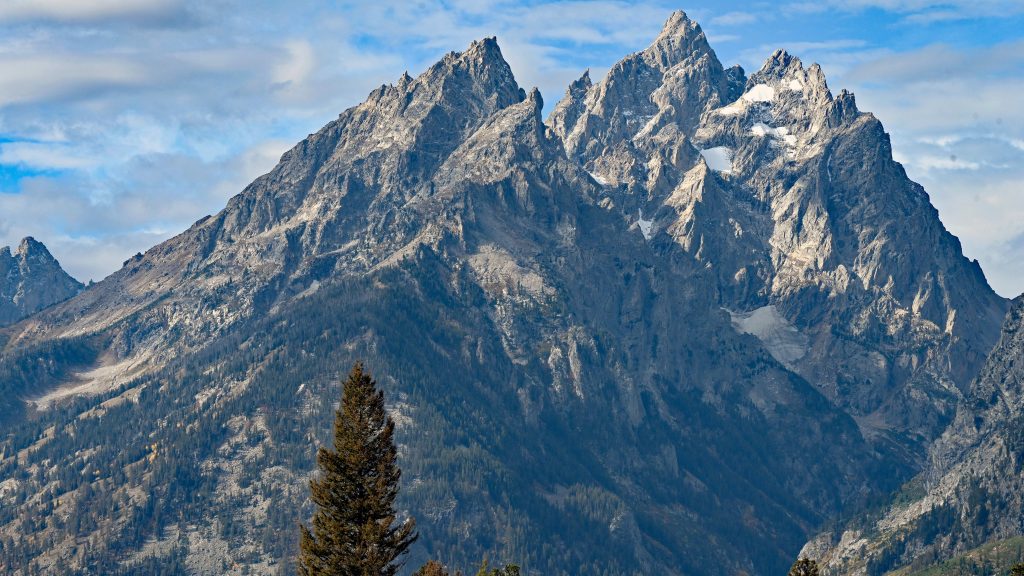
To its right rose Mount Owen, its ridges catching the afternoon sun, and to the left, the graceful sweep of Teewinot Mountain. The three peaks together formed an almost perfect composition — a cathedral of stone and light.
When the day began to fade, I left the park and drove toward Driggs, crossing into Idaho. At the Teton Hostel, I met a few other travelers — people with dust on their boots and stories from the road — and we spent the evening talking until late, the mountains still glowing faintly in our memories.
The next morning, I returned to Grand Teton once more, taking the road through Teton Village.
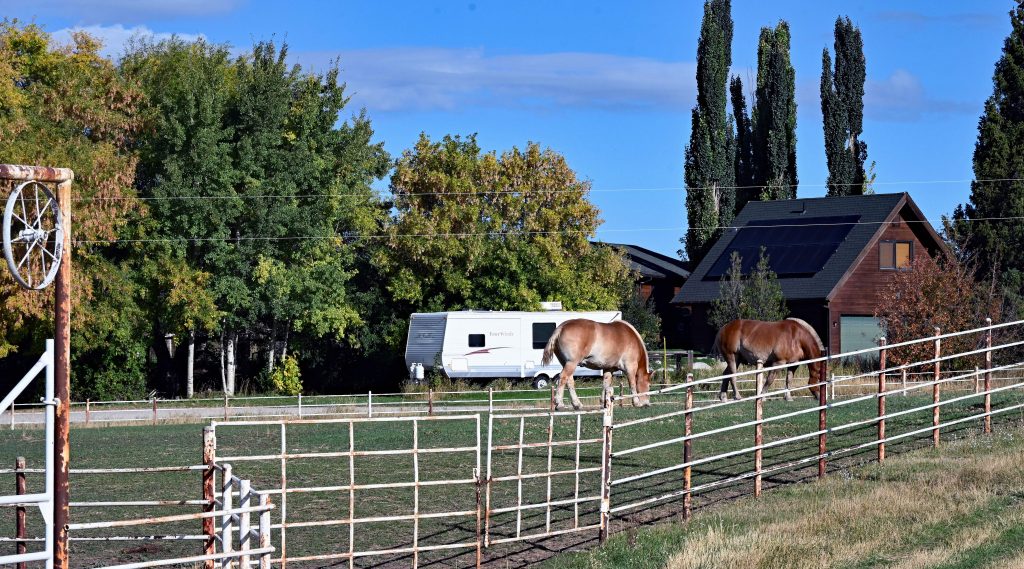
My destination was the Lupine Meadows Trailhead, where the forest was alive with early sunlight filtering through golden leaves. As I approached, I saw cars pulled over along the road. A black bear was moving among the trees, eating berries, entirely unconcerned about the twenty or thirty people watching him in hushed excitement. His glossy fur gleamed in the light, and his calmness made the moment strangely peaceful — a quiet reminder that this was his home, and we were only guests.

A few miles further, another group had gathered. They too had seen a bear, but he had already disappeared into the thick brush, leaving only a whisper of movement behind. I smiled at their mix of disappointment and awe before continuing to the trailhead.
I started hiking up the Lupine Meadows Trail, surrounded by the scent of pine and the rhythm of my own breathing. After about a mile and a half, I felt my body telling me to turn back. I listened — there was no need to rush or push further. Sometimes, the beauty of a place reveals itself best in calm observation, not in conquest.
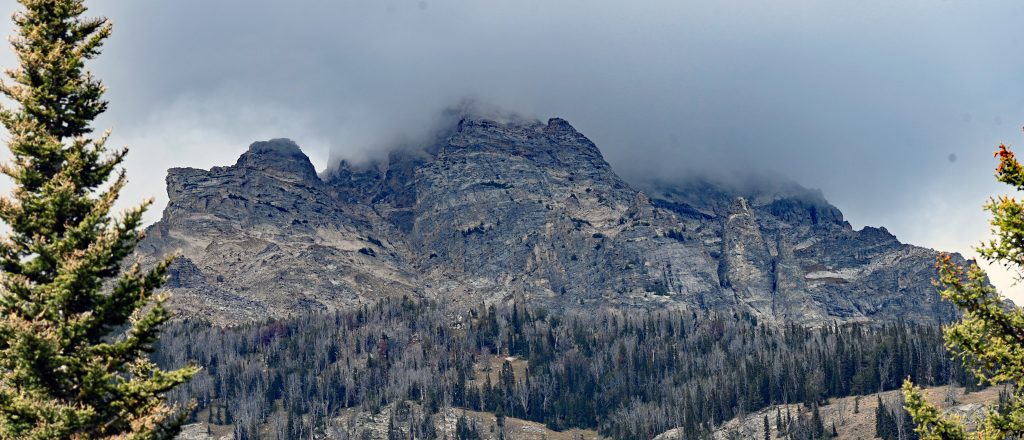
Driving out, I stopped one last time at the Glacier Turnout. Before me stretched the entire Teton Range, shining under the late-morning sun —

the Grand Teton dominating the skyline, Mount Owen and Teewinot forming its graceful companions, and further north,
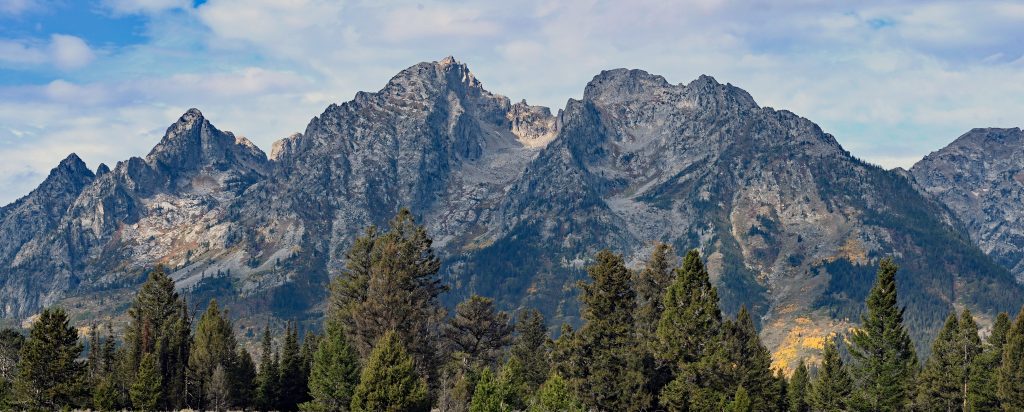
the massive bulk of Mount Moran anchoring the horizon. Their colors shifted from silver-gray to warm ochre and pale rose, depending on how the light struck them. It was a final farewell, a vision of strength and serenity that seemed almost timeless.
Standing there, I felt grateful — for the silence, the light, the bears, and the mountains themselves. Grand Teton had given me not only sights to photograph, but moments to remember — moments where nature felt infinite and perfectly alive.